 |
The Entrepreneurial Model looks at a business as if it were a product, sitting on a shelf and competing for the customer’s attention against a whole shelf of competing products (or businesses).
|
73 |
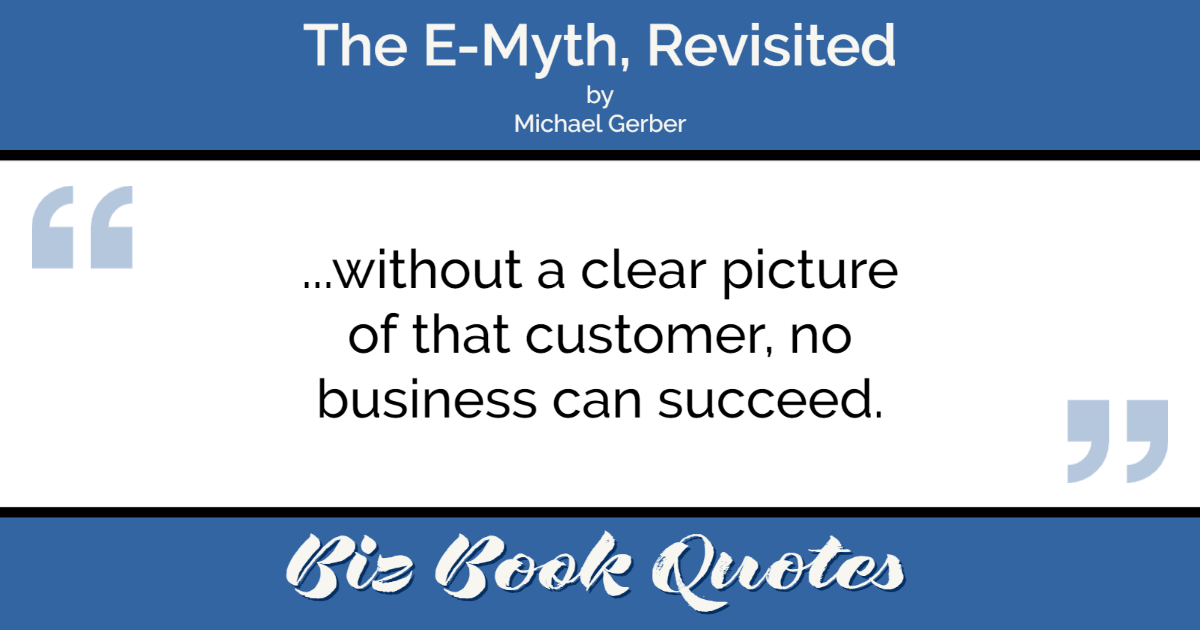 |
…without a clear picture of that customer, no business can succeed.
|
74 |
 |
To the Entrepreneur… the customer is always an opportunity.
|
74 |
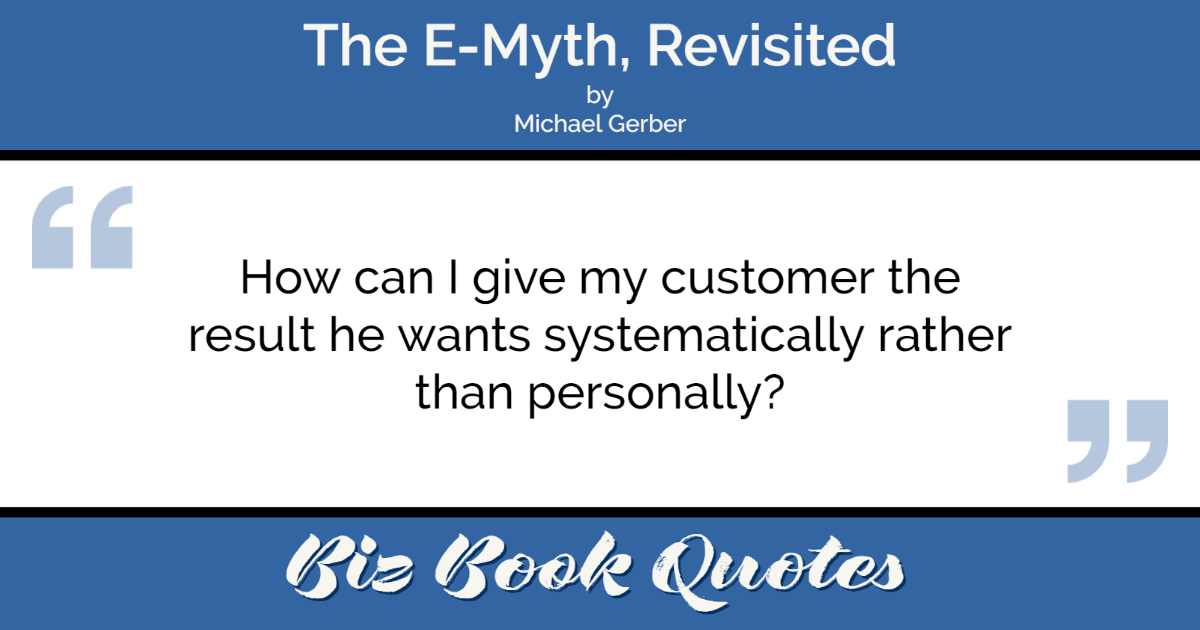 |
How can I give my customer the result he wants systematically rather than personally?
|
100 |
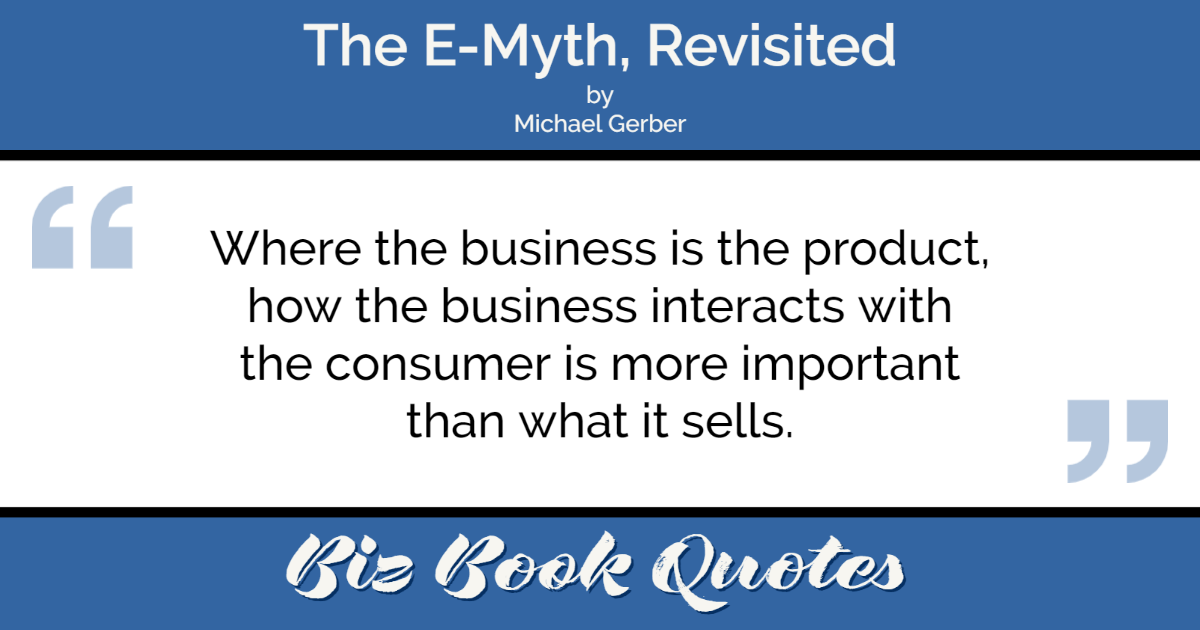 |
Where the business is the product, how the business interacts with the consumer is more important than what it sells.
|
118 |
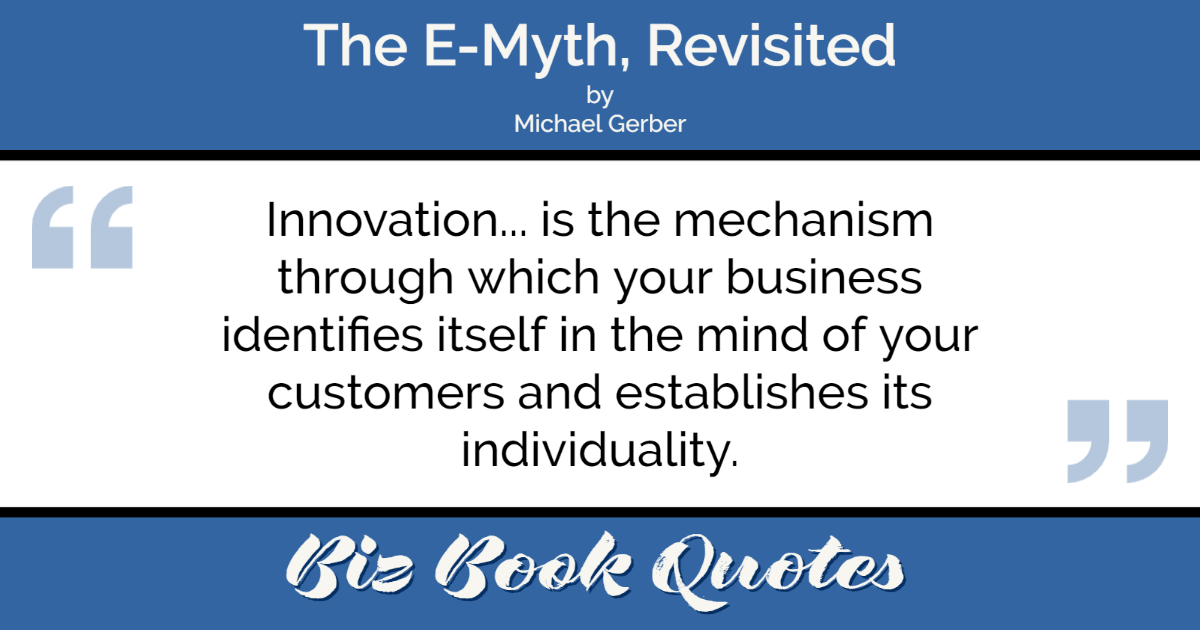 |
Innovation… is the mechanism through which your business identifies itself in the mind of your customers and establishes its individuality.
|
121 |
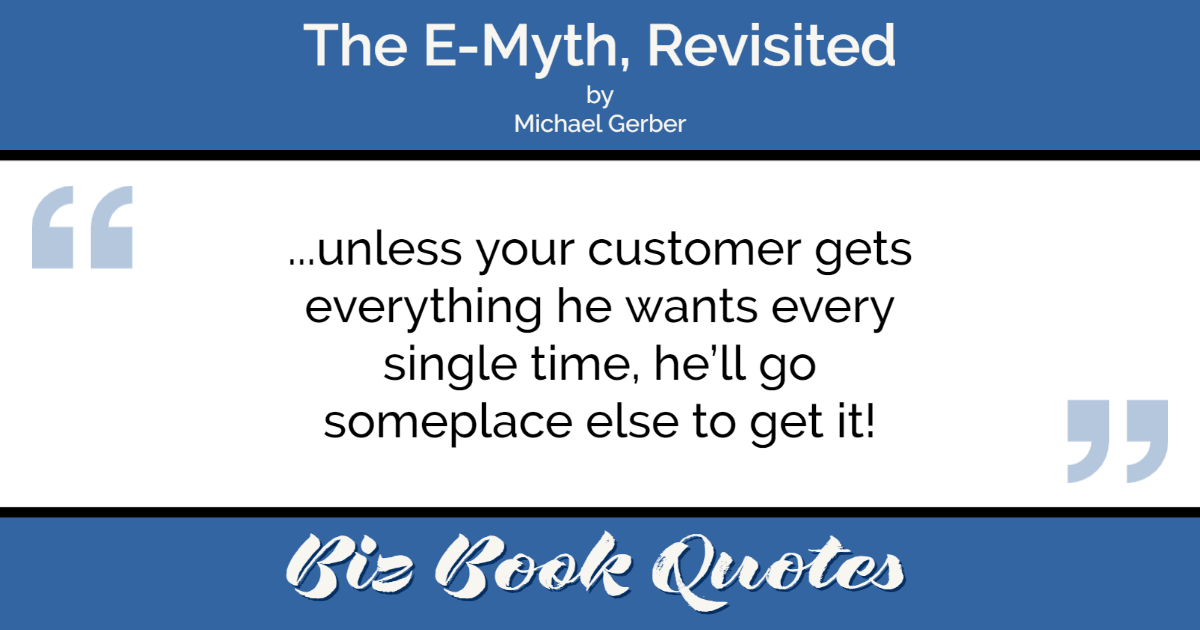 |
…unless your customer gets everything he wants every single time, he’ll go someplace else to get it!
|
126 |
 |
The product is what your customer feels as he walks out of your business. What he feels about your business, not what he feels about the commodity.
|
155 |
 |
Psychographics is the science of perceived marketplace reality. It tells you why your customer buys.
|
155 |
 |
…the customer is not always right, but whether he is or not, it is our job to make him feel that way.
|
201 |